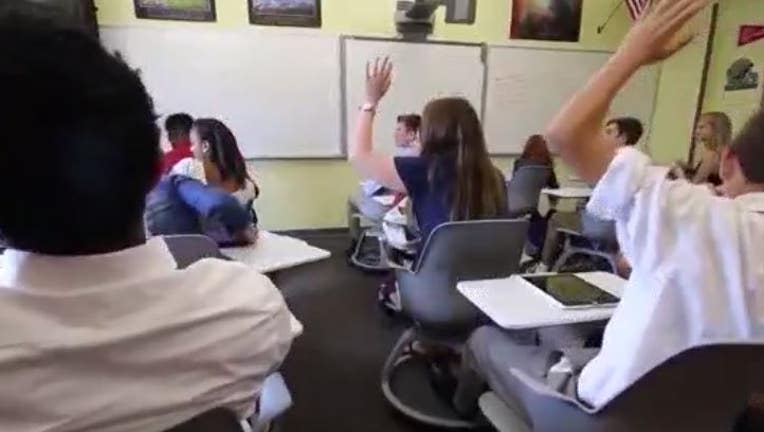Florida education commissioner: Masks should be voluntary in schools this fall

LAKE MARY, Fla. - Florida Education Commissioner Richard Corcoran is asking school superintendents to revise their district’s mask policy to make face coverings voluntary instead of mandatory for the 2021-22 school year.
"Florida continues to outwork and outperform the nation in the number of students receiving a high-quality education in an in-person education setting, and our success has been rooted in schools, districts and the state implementing learned best practices and constantly relying o science and evidence," Corcoran wrote in a memo released on Wednesday.
You can read the full memo below or here (PDF).
Corcoran said a one-size-fits-all approach to mask mandates "do not meet the unique needs of individual students or their families," and is recommending "surgical -- not sweeping -- decisions to mitigate largescale education disruptions."
Corcoran contends that data shows that district face-covering policies do not impact the spread of the virus.
"Right now, our schools are safer than the communities at large," Corcoran added. "This safety record should only increase next school year with the increased availability of vaccines."
The Centers for Disease Control and Prevention (CDC) updated its K–12 school guidance in March to reflect the latest science on the physical distance between students in classrooms. The CDC now recommends that, with universal masking, students should maintain a distance of at least 3 feet in classroom settings. CDC has updated its operational strategy to say:
- In elementary schools, CDC recommends all students remain at least 3 feet apart in classrooms where mask use is universal — regardless of whether community transmission is low, moderate, substantial, or high.
- In middle and high schools, CDC also recommends students should be at least 3 feet apart in classrooms where mask use is universal and in communities where transmission is low, moderate, or substantial.
- Middle school students and high school students should be at least 6 feet apart in communities where transmission is high, if cohorting is not possible. Cohorting is when groups of students are kept together with the same peers and staff throughout the school day to reduce the risk for spread throughout the school. This recommendation is because COVID-19 transmission dynamics are different in older students – that is, they are more likely to be exposed to SARS-CoV-2 and spread it than younger children.

